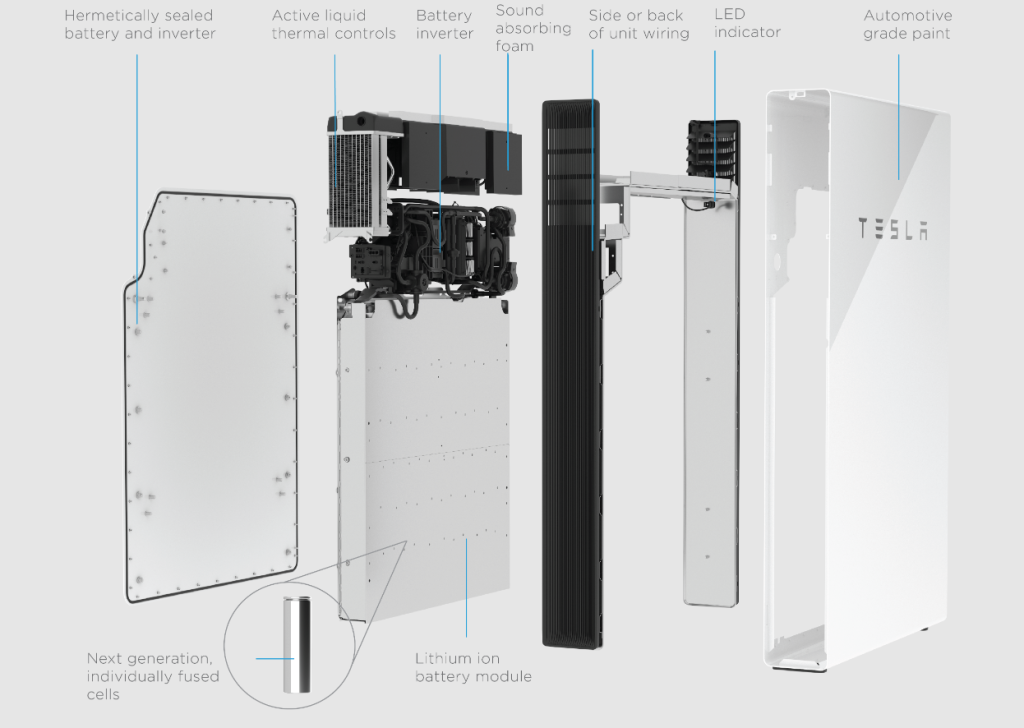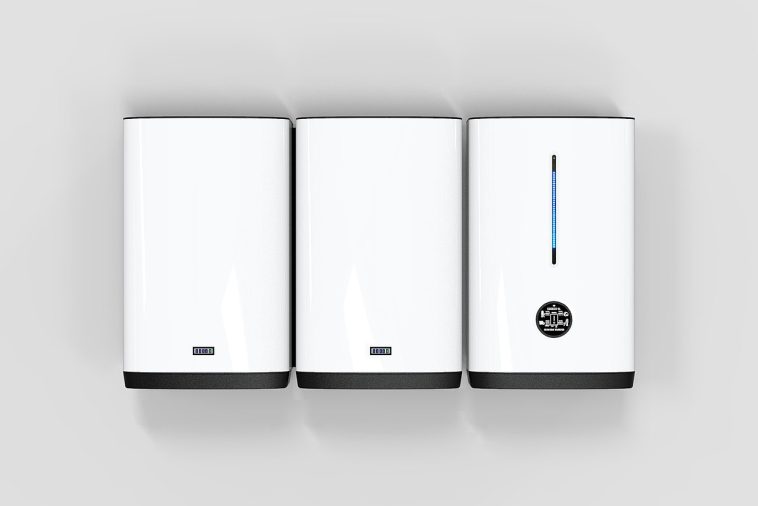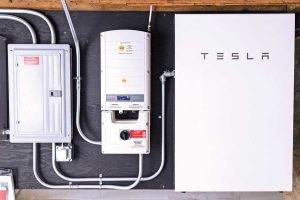One of the biggest problems with renewable energy is that it is not always produced when and where you need it. So you’ll need a battery.
This article covers:
- How to capture electricity when you need it, from export tariffs to batteries
- Battery types and most common DC to AC configuration
- Battery costs
- What to look out for when buying a battery
- Installation
- Other ways to store electricity including diverting excess to hot water
- Should you buy a battery?
Here’s a sobering statistic: the sun delivers more energy to earth in an hour than the whole planet uses in a year.
So first we need to capture the energy – often through photovoltaic panels. But then we need to be able to use it at the place and time of collection. Or, we need a storage (and transportation) medium.
The grid can provide storage by allowing us to export excess electricity when we don’t need it and then take it back from the grid when we do.
But the price you are paid for the excess spilled to the grid is generally considerably less than the cost of the electricity you take from it. Both NI and ROI offer export tariffs.
“Feed-in” and “microgeneration” tariffs can make the economics more favourable by giving a better rate for the exported electricity and, in some cases, by providing payments for the electricity you actually use.
However, increasingly there is interest in the concept of battery storage in the home – especially for storing the intermittent output from renewable systems.

Battery types
Off-grid homes have used battery storage for years. These have tended to be large banks of lead acid cells similar to car batteries and can be expensive overall, even if well maintained.
However in the case of an off-grid home the cost is offset against that saved from avoiding grid connection or, looking at it another way, you have no choice.
For the rest of us, the potential benefits of batteries need to be weighed up against the costs, which currently range from about £3,000 to £8,000 / €6,000, depending on storage capacity and type. Lithium ion is the dominant technology at present.
Retrofitted batteries will generally be AC types, installed between the renewable system and the electricity meter. This requires an inverter to convert the DC output into AC (and back again for storage).
DC batteries tend to be fitted when the renewable system is installed and do not require an additional inverter.
What to consider when buying a battery

Issues to be considered with domestic batteries include lifespan (number of charging cycles), capacity/ power output and of course cost (including installation and accounting for the value of the electricity).
Some systems can be charged from the grid, allowing variable unit costs at different times of day to be exploited via smart technology.
There are also grants in ROI for EV home chargers but these do not store electricity – they just allow you to charge your car directly from the grid. The €600 grant to install a battery has been scrapped.
There is therefore the possibility of linking electric vehicle (EV) batteries with the domestic electricity supply.
The EV battery can be charged up overnight on cheap rate electricity and then supply the home with left over energy in the evening when tariffs are higher.
However, utilising PV generated energy would require domestic batteries as well, as the car is likely to be out during the day (though domestic wind-turbines would not be affected in the same way).
An added benefit of domestic battery storage is potential back-up in the event of a power cut though not all systems will do this.
In NI your new build needs to make provisions for EV charging facilities – in ROI that’s required for larger developments only.
Other ways to use excess electricity

If you have a hot water cylinder another way of storing your electricity is to connect the output to the immersion heater and charge up your hot water.
You will need an extra device called an immersion controller, which costs in the region of €300 / £200 to 400 and is installed after the consumer unit, i.e. using AC current. It will divert supply to the immersion heater any time there is excess. It can also be used in conjunction with an AC battery.
So should owners of PV or domestic wind turbines, or those proposing to install them, rush out and buy batteries? The consensus is not yet – the technology is still developing. Efficiency and reliability will improve as costs fall.
Also, batteries use rare metals that are in finite supply in the earth’s crust. Another emerging technology that can store (and transport) renewables-generated electricity is the hydrogen fuel cell. So watch this space…










